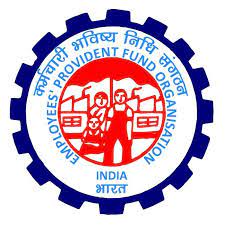
Employees Provident Fund Organization

16.12.2023
Employees Provident Fund Organization , Daily Current Affairs , RACE IAS : Best IAS Coaching
|
For Prelims:About Exchange-Traded Funds,Important points,Key benefits of investing in ETFs,Risks in ETFs,About Employees Provident Fund Organisation |
Why in the news?
Recently the Employees Provident Fund Organization has invested Rs 27,105 crore in exchange traded funds between April and October this financial year.
Important points:
- This Rs 27,105 crore is about 51% of its investment in equipment in the entire last financial year.
- Minister of State for Labor and Employment Rameshwar Teli said in a written reply in the Lok Sabha that EPFO had invested Rs 53,081 crore in the ETF during financial year 2022-23, up from Rs 43,568 crore in 2021-22.
- The total corpus of various funds managed by EPFO as of March 31, 2022 was Rs 18.30 lakh crore, of which 91.3% was invested in debt including the Public Account of India and 8.7% was invested in ETFs.
About Exchange-Traded Funds:
- An exchange-traded fund (ETF) is a collection of investments such as equities or bonds.
- It is traded on the stock exchange.
- By combining the flexibility of stocks and the portfolio-diversification-boosting powers of mutual funds, ETFs give you an affordable way to access a variety of asset classes.
- ETFs give you access to a diverse mix of asset classes including domestic and international stocks, bonds and commodities.
Key benefits of investing in ETFs:
- It can be bought and sold at any time of the day.
- ETFs are more tax efficient than actively managed mutual funds because they generate lower capital gains distributions.
- They allow investors to avoid the risk of poor security selection by the fund manager while offering a diversified investment portfolio.
- The stocks in the indices are carefully selected by the index providers and rebalanced periodically.
- They provide liquidity at any time through exchanges.
Risks in ETFs:
- Under this, if you invest small amounts repeatedly, then transacting directly with a fund company in a no-load fund can be expensive.
- ETFs are subject to similar market fluctuations and volatility.
- ETFs may experience low trading volume or wide bid-ask spreads, which could affect their liquidity and price.
- ETFs are subject to changing laws and regulations that may affect their structure, operation or taxation.
ETFs and Mutual Funds:
- ETFs are similar to mutual funds in many ways, except that ETFs are bought and sold from other owners on stock exchanges throughout the day, whereas mutual funds are bought and sold from the issuer based on their price at the end of the day.
- ETFs are also more transparent because their holdings are typically published online daily.
- Unlike mutual funds, ETFs can be sold on stock exchanges, shorted, or purchased using funds borrowed from a stockbroker.
About Employees Provident Fund Organisation:
- Establishment: This organization was established in 1952 under the Employees Provident Fund and Provisions Act 1952.
- Headquarters: New Delhi
- The Employees' Provident Fund Organization is under the administrative control of the Ministry of Labor and Employment, Government of India.
- Employees Provident Fund Organization is a government organization in India providing state promoted compulsory contributory pension and insurance scheme.
- It is the largest organization in the world in terms of members and volume of financial transactions.
- EPFO does not invest directly in individual shares including shares of any blue chip company. EPFO invests in equity markets through ETFs that mimic BSE-Sensex and Nifty-50 indices.
EPFO started investing in equities in August 2015 through ETFs based on Nifty-50 and BSE Sensex with 5% exposure.